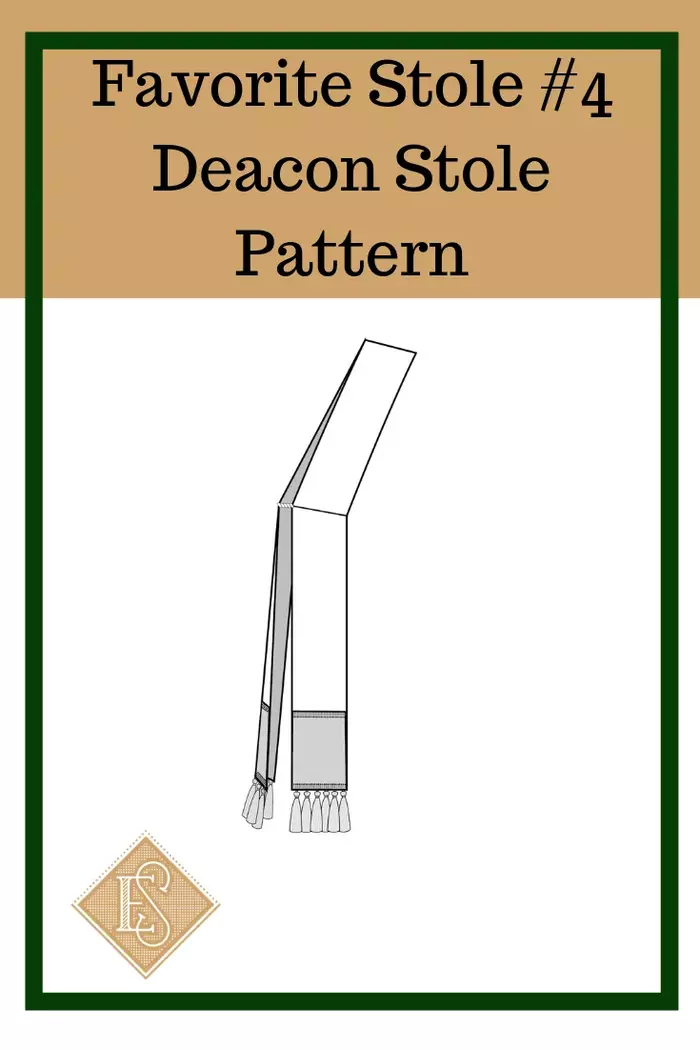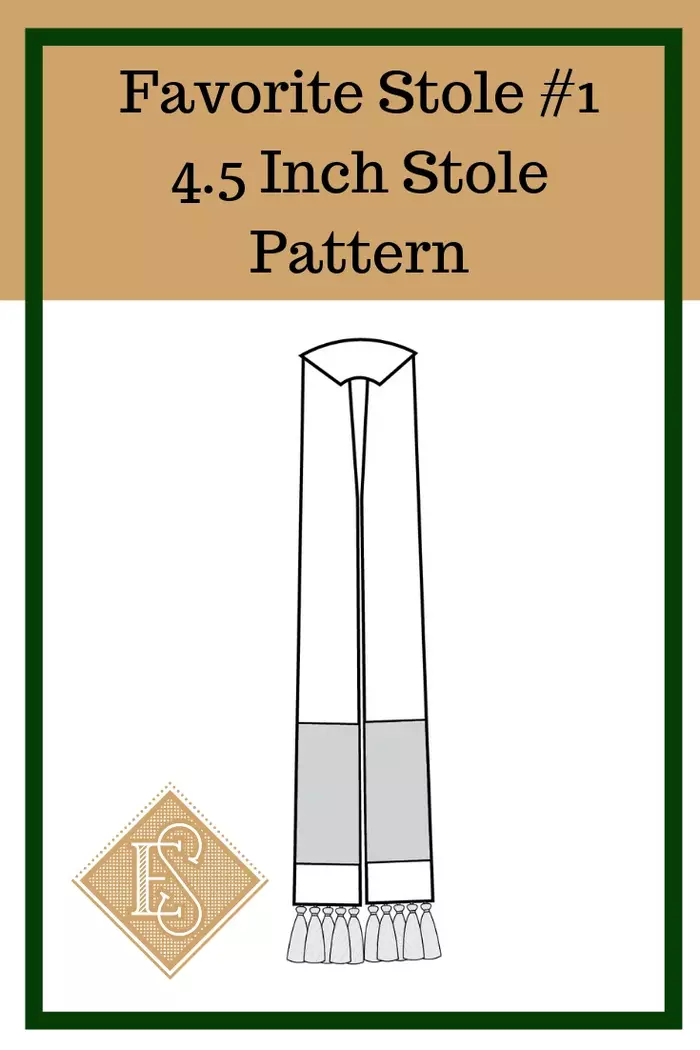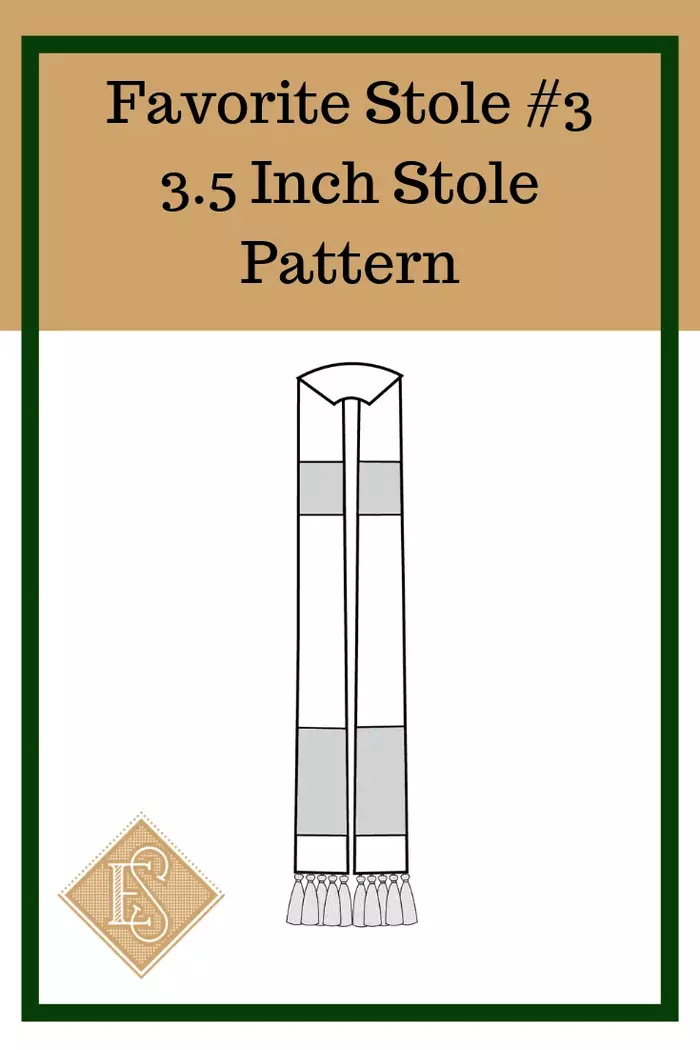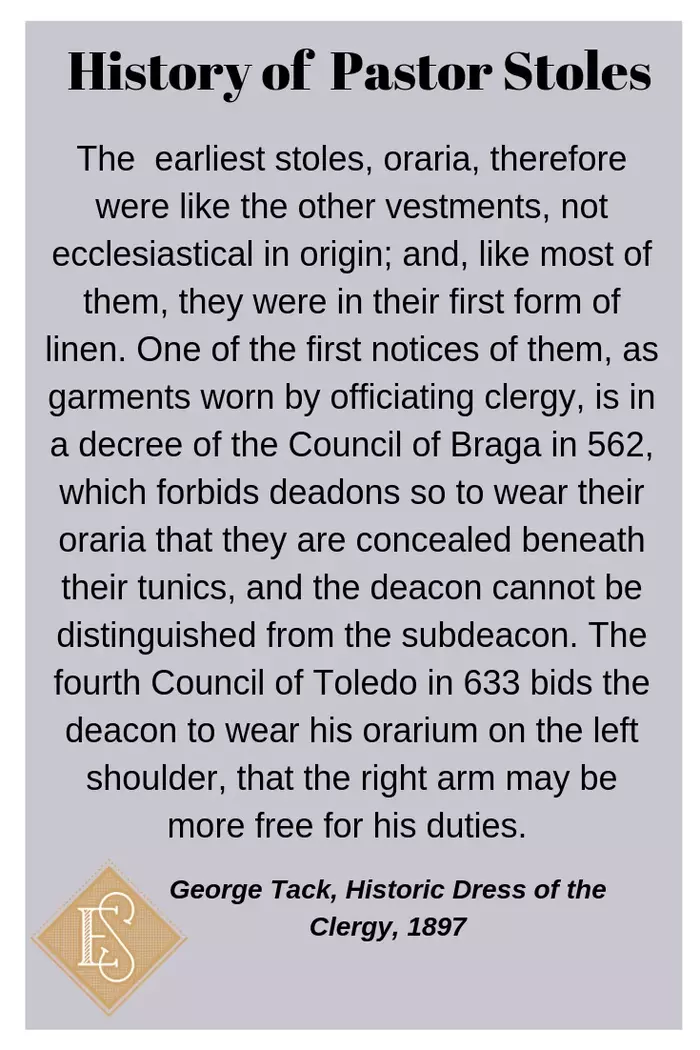Top Five Traditional Clergy Stole Patterns for Church Vestment
Top Five Traditional Clergy Stole Patterns for Church Vestment
A few days back we were talking about Traditional Church Vestment patterns and the conversation centered around the chasuble pattern. Today, we are going to review the Top Five Traditional Clergy Stole Patterns for Church Vestment.
We love collecting vintage patterns and creating church vestment patterns at Ecclesiastical Sewing. Yes, patterns are one of those items that can fuel the imagination, and make the mind wander and dream. We look at vintage photos in old books and read about the history of church vestments and that can lead to the creation of special patterns to use when making church vestments.
To help clarify our vision, we create patterns. Sewing patterns provide shape and structure to the items we envision. But they go beyond that. Patterns provide the width and length, the fullness, the hang, the curve, and the edges that a garment will have. Having a good pattern is like having a firm foundation on which to build a house. If the foundation is not square and lever, or if boards are not cut accurately, a house will never stand straight.
And so it is when we make clergy stole patterns, or any other church vestment, or any other garment or sewing project. The finished results are dependent on making a good start. That good start comes with a good pattern.
Favorite Stole #1- 4.5 Inch Stole Pattern
When Ecclesiastical Sewing started to create our first line of clergy patterns, we decided that one stole pattern simply would not do. One pattern could not fill every need imaginable when it comes to the world of pastoral and priest stoles. Reviewing historical church vestments made us realize that there could be an endless number of stole pattern options. So we had to make some decisions. And here are just a few of the end results for stole patterns.
The first stole pattern we created is our 4.5-inch Wide Stole Pattern as shown above. This is the workhorse pattern in the Ecclesiastical Sewing Studio. The pattern had to be created in a width that was not too wide, and not too narrow. It had to be wide enough so embroidery designs would fit without looking too small. It had to fit the neckline well, and it had to have options for length, as finished lengths varied greatly with historical vestments. The end result was this pattern which we use daily in our studios.
Yet, this was only the beginning.
Favorite Stole #2, V- Neck Stole Pattern
The next stole pattern that was created is the V-Neck Stole Pattern. This pattern is slightly wider at almost 5 inches. It is also a bit longer. The finished stole sits off the back neckline and comes to a V-shaped point. The V-Neck stole pattern is by far the most popular stole pattern for our customers. They enjoy creating this pattern. They enjoy adding a touch of embroidery to the center back neckline on this stole. The larger V-shape at the back neckline allows many customers to embroider a cross or some other embellishment to adorn the stole and make it special.
Favorite Stole #3, 3.5 Inch Stole Pattern
The narrow 3.5-inch pastor or priest stole is in keeping with the history described by George Tack in his book “Historic Dress of Clergy.” He describes it thus:
The early mediæval stoles were long, and of almost, if not quite, the same breadth throughout; the later Continental tendency has been to shorten them, while at the same time widening the ends.
The 3.5-inch Stole Pattern and style fit with traditional stoles that date by centuries as it is narrow, and the same width throughout.
Favorite Stole #4, Deacon Stole Pattern
 Next up is the Deacon Stole Pattern. For those lovers of history, here is an interesting note about stoles, including deacon stoles:
Next up is the Deacon Stole Pattern. For those lovers of history, here is an interesting note about stoles, including deacon stoles:
This exact deacon stole pattern and style is not seen in historical books, but it has become a favorite in modern times. The Deacon Stole Pattern has mitered seams at the shoulder and hip. The stole is worn on the left shoulder, crosses the chest, and joins at the right hip. The stole is elegant and may be adorned with an endless list of possibilities.
Favorite Stole #5, Tapered Stole Pattern
The final stole pattern we are reviewing today is the Tapered Stole Pattern. As George Tack stated above, the next change in history after the mediæval period, was to shorten stoles and make them wider at the lower edge. The Tapered Stole style is an example of this change. The tapered stole has a narrow fitted neckline. As the stole begins to fall over the shoulder, it gradually widens at the hemline. The Tapered Stole Pattern has options for two lengths: 43″ for the shorter length and 52″. This is the classic stole style that is often seen worn with a Cassock and Surplice. When the pastor or priest is wearing a surplice that ends at around the knee-length, the shorter Tapered stole is often selected. The longer Tapered stole is worn with surplices that fall to just a few inches from the floor, such as our longer Lace Hem Roman Surplice Pattern.
The above stole styles are all used in our studios. We use the stole patterns when we are teaching classes, and our customers give the patterns great reviews.
Carolyn W. Verified Buyer 5-star rating 06/05/18
Soli Deo Gloria
References:
Tack, George S.(1897). Historic Dress of the Clergy. London. William Andrews, & Co.
Be sure to visit our online storefront Ecclesiastical Sewing where you may shop for Liturgical Fabrics, altar linen fabrics, church vestment-making patterns, liturgical machine embroidery designs, church vestment trims, notions and so much more. You may also find us on Ecclesiastical Sewing on Facebook, Twitter, and Pinterest.
Favorite Things: Wakefield Ecclesiastical Fabric
October 11th–Philip the Deacon
Favorite Things: Vintage Vestment Books
How to Make a Clergy Stole: Stole Making
Liturgical Brocades Used for Church Vestments and Historical Costumes
How to Determine the Correct Stole Length
Traditional Linen Alb Priest Vestment Sewing Pattern
Historical Use of Chasubles and History of Vestment
Traditional Church Vestment Sewing Patterns
Final Pattern: A Stole for Our Deacons











 RSS - Posts
RSS - Posts
You must be logged in to post a comment.